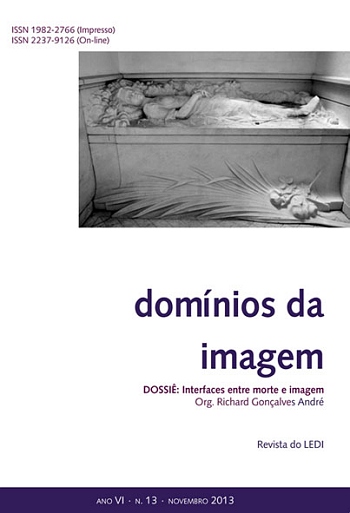The Queen of the Dead: image, language and silence
DOI:
https://doi.org/10.5433/2237-9126.2013v7n13p39Keywords:
Cartoon, Language, Death, Territory, Copi.Abstract
In this article I will concentrate on the last of the plays of Raúl Damonte Taborda (Copi) "Una visita inoportuna" and his famous cartoon, "La mujer sentada". The material is divided in two registers, theater and cartoon . At the same time, the corpus involves two distant geographical locations : Buenos Aires and Paris. The account of his own death in an early stage and present-future time , realizes the ambivalence of meaning and commitment to the absurd. Moreover, the problem of language and translation is an irresolvable tension in the production of Copi , aspect which reflects and emphasizes a loss of identity as an impossible or purely destructive aspect . Is not death the final event whose meaning is no sense? Within the dialectic between being and appearance , between the real and its folds , between the signifier and the signified , installs , cruel silence , graphics Copi.Downloads
References
BARTHES, Roland. Ensayos críticos. Barcelona: Seix Barral, 1983.
BRAVO, Guillermo. Una visita inoportuna. Entrevista a China Botana. Suplemento SOY, Buenos Aires, p. 12, 15 oct. 2010.
BRAVO, Guillermo. La mujer sentida, entrevista a Copi realizada por Michel Buteau, traducida por Guillermo Bravo. Suplemento Soy, Buenos Aires, p. 12, 20 ene. 2012.
COPI. Una visita inoportuna. Colección Las Obras y sus Puestas, dirigida por Osvaldo Pellettieri, edición del Teatro Municipal General San Martín, Fundación Teatro San Martín, oct. 1993.
COPI. Teatro I, Una visita inoportuna, El cuenco de Plata, Buenos Aires. 2011.
GROENSTEEN, Thierry. The system of comics. Traducción de Bart Beaty y Nick Nguyen. Mississippi: University Press of Mississippi, 1999.
MASOTTA, Oscar. Reflexiones presemiológicas sobre la historieta: el esquematismo. In: MASOTTA, O. Conciencia y Estructura, Buenos Aires: Jorge Alvarez, 1967.
REGGIANI, Federico. "El espesor y el signo": Historietas y enunciación, Estudio y crítica de la Historieta Argentina, 2007. Disponible en: http://historietasargentinas.wordpress.com. Acceso en: 18 dec. 2013.
LINK, Daniel. Fuera de serie. Eva Perón. In: Fantasmas. Imaginación y Sociedad. Buenos Aires: Eterna Cadencia, 2009.
SAÍTTA, Sylvia. Regueros de tinta. El diario Crítica en la década del 1920. Buenos Aires: Sudamericana, 1998.
SASTURAIN, Juan. Copi o la incomodidad. Suplemento Especial Copi. A 50 años de su llegada a París, coordinado por Laura Vazquez, Revista Fierro, Buenos Aires, n. 63, ene. 2012.
STEIMBERG, Oscar. Leyendo Historietas. Textos sobre relatos visuales y humor gráfico. Buenos Aires: Eterna Cadencia Editora, 2013.
TCHERKASKI, José. Capítulo Uno. Copi: espacio y Libertad. In: El teatro de Jorge Lavelli. El discurso del gesto. Buenos Aires: Editorial Belgrano, 1983.
VAZQUEZ, Laura. El oficio de las viñetas. La industria de la historieta argentina. Buenos Aires: Paidós, 2010.
VAZQUEZ, Laura. Fuera de cuadro. Ideas sobre historieta. Buenos Aires: Agua Negra, 2012.
Downloads
Published
How to Cite
Issue
Section
License
Copyright (c) 2013 Domínios da ImagemDomínios da Imagem adopts the Creative Commons Attribution 4.0 International License, therefore, the copyrights related to the published articles belong to the author(s), who grant the journal the exclusive right of first publication.
Under this license it is possible to: Share - copy and redistribute the material in any medium or format. Adapt - remix, transform, and build upon the material, giving due credit and providing a link to the license and indicating if changes were made.












 The works in this journal are licensed under Creative Commons .
The works in this journal are licensed under Creative Commons .